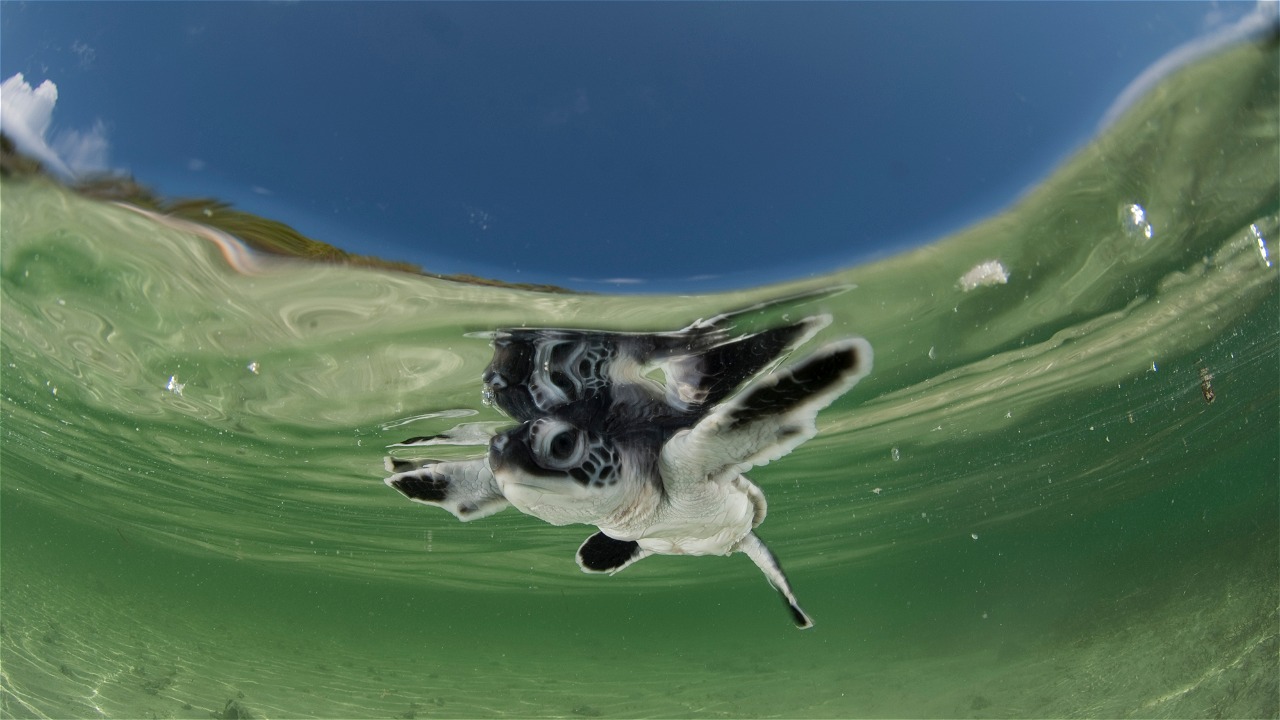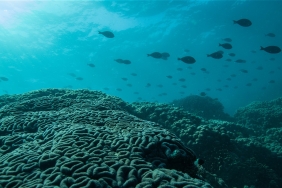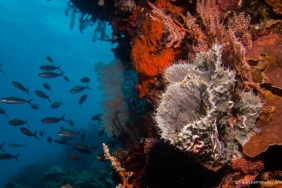34 SEA TURTLES READY TO BE RELEASED AFTER SMUGGLING BUST
On April 6, 2016, the Directorate of Marine Police (Ditpolair) of Bali Police foiled the smuggling of 40 green turtles in Kubu-Karangasem waters. All turtles were temporarily deposited at the Turtle Conservation and Education Center (TCEC) Serangan Bali to receive veterinary medical examination and further treatment before being released. The handling was carried out quickly under the supervision of the Udayana University Veterinary Medicine team and WWF Indonesia. After three days of failed smuggling, 34 turtles have now recovered their health and are ready to be released to the sea.
According to the Bali Police's records, the turtles were smuggled for trade and consumption. During the ambush process, it was found that the ship was carrying turtles in a terrible condition. All turtles were tied to their two front flippers and lying without water in the hold and upper deck of KMN Putra Tunggal. It is estimated that the turtles had been on the ship tied up for more than two weeks. The entire evacuation process took 8 hours before the turtles were deposited at TCEC Serangan.
Today, April 8, 2016, the TCEC medical team reported the results of the intense examination and treatment of the turtles over a period of 3 days. The initial process was to measure the turtles, where the average size of the turtles ranged from 60-70 cm (minimum 52 cm and maximum 96 cm). It was found that 1 turtle died upon arrival at TCEC and 2 more died a few hours later. In general, the turtles were treated with open wounds, antibiotics and vitamins to restore their health. Meanwhile, 2 turtles had open fractures and decay with parasitic infestation (Miasis) on the front flipper and required amputation. For this reason, the amputation process of 2 turtles was carried out on April 8 to prevent the infection from getting worse. Another 1 turtle had Parapimosis (turtle's genitals sticking out due to severe dehydration), which required treatment to prevent the turtle from becoming a target for predators. Therefore, 3 turtles still require further treatment and the remaining 34 turtles were declared healthy to be returned to their habitat.
"After being given therapy for 3 days, 34 turtles are now actively swimming, dehydration has recovered and the turtles are actively eating. Now, we declare the turtles ready to be released back to the sea" explained Drh Maulid Dio Suhendro S.KH, one of the veterinarians on full duty at TCEC. Dio added that due to the large number of turtles that must be handled quickly, TCEC also involves young prospective doctors from the Turtle Guard community from Udayana University. "We are racing against time to save the lives of these turtles," said Dio.
TCEC Attack
TCEC's medical team and Bali's Ditpolair discovered that the turtles tragically found in the smuggling case were part of a chain of illicit trade that has yet to be eradicated in Indonesia. The two laws used to protect this species from extinction, Law No. 5 of 1990 on the Conservation of Natural Resources and Ecosystems (KSDAHE) and Law No. 31 on fisheries, do not necessarily bind consumers and traders to stop turtle trade practices.
"It can be said that we still have a long way to go. In free waters and minus supervision, sea turtles face high threats from many parties. Their deaths can occur due to the practice of deliberate or accidental capture. What we are doing today is only one percent of the effort to save sea turtles and the ecological function of the sea," said Dr. Maulid Dio. "It takes a higher commitment to free sea turtles from their tragic fate," he added. I Made Kanta, head of TCEC Serangan, said that not only law enforcement cases, his office also often receives injured sea turtles from fishermen due to being caught or hooked accidentally, requiring rehabilitation. "The turtles are then treated by veterinarians before being released again, but there are also those that cannot be released because their front flippers have been amputated," he said.
As the only sea turtle conservation and education center in Denpasar, TCEC is a corridor that brings together doctors and prospective veterinarians, environmental activists, environmentalists, security officers and even tourists who have concerns about saving sea turtles. TCEC was initiated in 2006, with the aim of ending the turtle trade by encouraging people to stop consuming turtle products (whether for religious purposes or otherwise), and generally supporting turtle conservation; providing turtles for religious ceremonies without killing them, and monitoring the size and number of turtles. This program not only controls the use of sea turtles, but also provides employment opportunities for the local Serangan community; and ultimately encourages them to become watchdogs for the sea turtle trade - particularly in Serangan, and more generally in Bali.
TCEC stands on 2.4 hectares of land right in Tanjung Benoa Village, the heart of the city where the turtle trade takes place on a massive scale. The trade has been going on for decades and has destroyed sea turtle populations and ecological damage in many parts of Indonesia. Over its long operational life, TCEC has expanded its conservation efforts beyond the island of Bali. "We receive sea turtle eggs from outside Bali and help hatch them here. This approach is somewhat extreme because it is considered to change the natural factors of the turtle. But for the time being this approach is effective in securing turtle eggs from the consumption trade."
For more information contact :
I Made Kanta (Chairman of TCEC Serangan): 081353212227
Drh. Windia Adnyana, Ph.D (TCEC Supervisor): 08123828010
Drh. Maulid Dio Suhendro,S.K (TCEC Medical Team) : 082340341133





